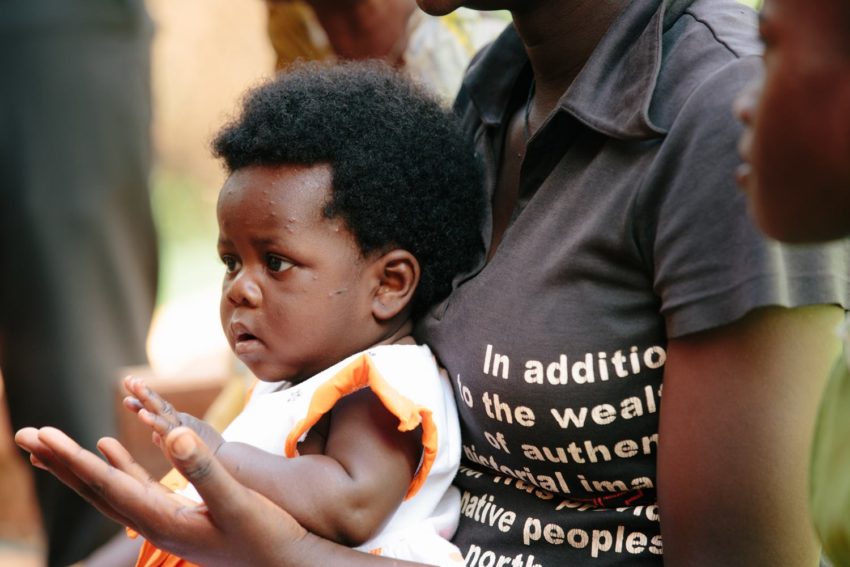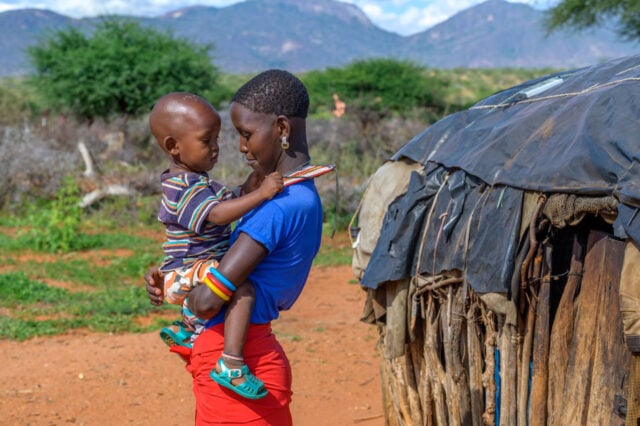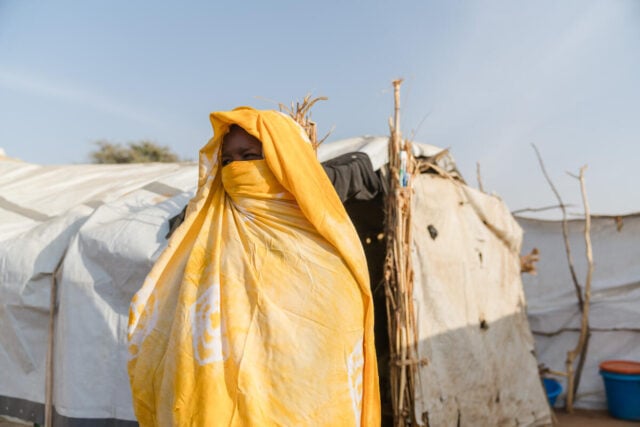Yesterday in Uganda, our bloggers met 16-year-old Jane and her infant, Lydia. She is a child who gave birth to a child, then faced a choice: pursue her education and dreams or focus on motherhood.
Thanks to the love and support she has around her, Jane has been able to do both! Read how.
* * *
“Child mortality is high because children are giving birth to children.”
Obed Byamugisha told me this yesterday as we drove from the World Vision program office in Buikwe district to visit our first family on this blogging trip to Uganda. He was talking about the many complex ways in which World Vision is working to protect children, and this simple sentence captured so many of the nuances we were discussing and would see throughout the day.
Obed leads World Vision’s child protection programs across several districts in Uganda. I’ve known his name for about four years as I’ve edited blog posts about his work to fight against the traditional practice of sacrificing children for ritual healing. But in meeting and listening to him, then meeting the families these programs are supporting, I have an even greater appreciation for the complexity and necessity of this work.
He then told me, “Children are giving birth to children.”
On the surface, this statement was about the practice of child marriage. Obed told me how in Uganda’s culture, people see a girl who begins menstruating as ready to marry. But girls’ minds and bodies are not yet ready to become mothers; teen moms and their babies are both at a higher risk of dying in childbirth.
There is a significant social effect as well. Children — girls who are only biologically able to have children — aren’t yet ready for the emotional burden of parenthood, nor do they have a job or business that can support them both. They haven’t finished school, and most of the time a girl who becomes a mother will not finish school at all. Her development will end. Her dreams and goals for her future will end. And the future of her child is compromised by mom’s lower status in society.

Later yesterday, we met a family who is dealing with this very thing. Jane is 16, and since her mother died 11 years ago. she has lived with her grandmother Rose. And eight months ago, Jane gave birth to baby Lydia.
However, Jane’s story is not one of child marriage. Hers is a story of what here is referred to as “defilement,” or rape.
Jane’s story is one that our bloggers will continue to tell throughout this week and beyond, but as soon as we met this family, Obed’s sentence returned to me: “Children are giving birth to children.” Jane was 15. Her grandmother had big hopes for Jane’s future — that she would grow up to be a teacher. But now she was pregnant, facing stigma at school, and then giving birth and raising a child. But if she dropped out, she would miss taking her national exams and lose out on seven years of education.
In the midst of this absolutely tragic event, Jane’s grandmother is a shining light. She convinced the school to let her bring Jane’s work home and helped her study during her pregnancy, and they successfully pled with the school to let her take her exams. And she passed!
Today, Jane is in high school while baby Lydia is cared for by her great-grandmother. World Vision has walked alongside them throughout the process — her teacher and the volunteer supporting her case were trained in child protection by World Vision, and Jane is a sponsored child. Today, World Vision is helping monitor Lydia’s health and providing supplementary food because Jane can’t breastfeed while in school. Many children like Lydia who are conceived in violence end up abandoned by their mother. But not Lydia — both she and Jane have promising futures in store because of a great-grandmother’s love and dedication.
As we were getting ready to leave, I noticed something about Lydia: One of this 8-month-old’s ears is pierced and she wears a tiny gold earring. I remembered our first blog post about child sacrifice in 2014 when I first read Obed’s name and knew why. This earring was the one blemish on this beautiful, perfect infant to make her less of a target for abduction because witch doctors look for unblemished children to sacrifice.
Thank God that Lydia has this loving family around her!
World Vision child sponsorship is one of the most powerful ways to help protect vulnerable children. By helping communities and families work together to meet children’s needs, we can take a big step toward preventing child marriage, child slavery, and child sacrifice. Choose a child to sponsor in Uganda today.
See what some of our other Uganda bloggers are saying about their trip!
Danielle Smith: “Do Good: Journey to Uganda with World Vision”





Comments